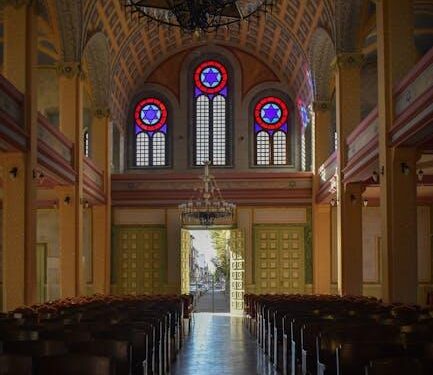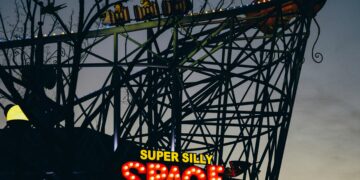Table of Contents
Introduction
The departure of King Alfonso XIII from Spain on the night of April 14, 1931, marked the end of the Bourbon Restoration and the dawn of the nation’s tumultuous Second Republic.1 This event was not a singular, sudden collapse but the terminal stage of a protracted crisis of legitimacy that had been corroding the foundations of the Spanish monarchy for decades. The fall of the crown was precipitated by the convergence of three primary forces: the deep-seated structural decay of the political system Alfonso XIII inherited; his own personal and political decisions, which consistently exacerbated these systemic weaknesses; and a final, decisive sequence of events that rendered his position utterly untenable.
It is a crucial distinction, both legally and historically, that the King’s departure was not a formal abdication.4 In his final manifesto to the nation, he explicitly stated, “I do not renounce any of my rights, because more than mine they are deposits accumulated by History”.5 This was the declaration of a monarch forced into exile, not one voluntarily relinquishing his claim. However, this legalistic subtlety was overshadowed by the political reality. His flight was a de facto abdication of power, a tacit acknowledgment that he had lost the consent of the governed, the loyalty of the military, and the very authority required to rule. This report will analyze the complex web of causality that led to this moment. It will argue that the proclamation of the Second Spanish Republic 2 became not only possible but, by 1931, was perceived as the necessary and logical outcome of the monarchy’s long and irreversible decline.
I. The Inherited Crisis: Structural Flaws of the Restoration Monarchy
King Alfonso XIII, proclaimed king at the moment of his birth in 1886, inherited a political edifice that was already fundamentally unstable.6 The Bourbon Restoration, established in 1874, was designed to provide an antidote to the chaotic political volatility of the 19th century, but it achieved stability at the cost of legitimacy. Its structural flaws created a political environment incapable of adapting to the pressures of the 20th century, making a crisis of the regime almost inevitable.
The Turno Pacífico System
The political system of the Restoration was, in name, a constitutional monarchy governed by the Constitution of 1876.7 In practice, however, it was a carefully managed oligarchy. Power was shared between the Conservative and Liberal parties in a system of pre-arranged rotation known as the
turno pacífico, or “peaceful turn”.8 This arrangement created an illusion of parliamentary democracy while ensuring that true power remained in the hands of a narrow elite of agrarian landowners, aristocrats, and their urban allies.8 The mechanism that made the
turno possible was a deeply corrupt electoral system based on caciquismo, where local political bosses (caciques) delivered the required election results through a combination of patronage, coercion, and outright fraud. This system was designed for stability, but it was a brittle stability that depended on the systematic political exclusion of the vast majority of the Spanish population.6 It was a political structure for a 19th-century agrarian nation, one that was fundamentally unresponsive to the profound social and economic transformations taking place in Spain.
The Challenge of Modernity and New Social Forces
The turno system was wholly ill-equipped to manage the emergence of mass politics and the powerful new social forces that defined the early 20th century.9 Industrialization, though uneven, had created a growing urban proletariat, while the countryside remained dominated by a vast population of impoverished, landless peasants (
braceros).5 These groups found their voice in powerful new organizations that operated outside the official political system. The socialist Unión General de Trabajadores (UGT) and the formidable anarcho-syndicalist Confederación Nacional del Trabajo (CNT), which boasted over a million members by 1923, became major forces in Spanish society.10 These movements represented the aspirations of millions who were denied genuine political representation.6 The era was consequently marked by intense and often violent social conflict. A wave of strikes, bombings, uprisings, and assassinations—including those of three prime ministers between 1897 and 1921—demonstrated the volatility of Spanish life and the inability of the Restoration system to integrate or pacify these new forces.12 The state’s response was almost invariably repression, particularly in industrial centers like Barcelona, which became a battleground of social warfare between organized labor and employer-backed paramilitaries, often with the army’s complicity.9 The system was not merely failing to adapt; its very purpose was to prevent adaptation in order to preserve the oligarchic order. This inherent rigidity meant that the conflict was not a negotiation for reform within the system, but an existential struggle between an archaic structure and the new social realities it sought to suppress.
The “Problem of Spain” and Regenerationism
The humiliating defeat in the Spanish-American War of 1898, known simply as the “Disaster of ’98,” was a profound national trauma that stripped Spain of its last significant overseas colonies and exposed the weakness of its political and military institutions.8 This event catalyzed a widespread intellectual and political soul-searching known as “Regenerationism.” Thinkers like Joaquín Costa, Miguel de Unamuno, and later José Ortega y Gasset articulated a powerful critique of the entire Restoration establishment, arguing that Spain was an “old-fashioned” and “degraded” nation in desperate need of modernization and Europeanization.13 Their diagnosis was that “Spain was the problem and Europe was the solution,” fostering a potent intellectual climate of anti-monarchism and disillusionment with the existing order.13 This call for “regeneration” deeply influenced the political discourse of the era. Even the young Alfonso XIII was affected, internalizing the idea that it was his personal mission to “regenerate” the country, a conviction that would shape his interventionist approach to the throne.8
Enduring Fissures: The Church and Regional Nationalism
Two other deep-seated historical tensions further destabilized the monarchy’s foundations: the role of the Catholic Church and the rise of regional nationalism.
The Catholic Church was a foundational pillar of the traditional Spanish order and one of the monarchy’s staunchest allies.12 For centuries, Spanish identity had been intertwined with a militant, conservative Catholicism that was hostile to liberalism, secularism, and pluralism.15 This alignment positioned the Church as a natural and powerful enemy of the rising forces of republicanism, socialism, and regional nationalism, which it often denounced as anti-Spanish and anti-God.17 By tying its fate so closely to the monarchy, the Church contributed significantly to the nation’s political polarization, ensuring that any challenge to the king would also be a challenge to its own privileged position in society.
Simultaneously, the 19th century had witnessed the consolidation of powerful nationalist movements in Catalonia and the Basque Country.18 These regions possessed their own distinct languages, cultures, and historical traditions of self-governance (
fueros), which had been progressively curtailed by the centralizing Bourbon state.19 These movements sought greater political autonomy, a demand that clashed directly with the centralist ideology of the monarchy and the Spanish army, who viewed such aspirations as a threat to the sacred unity of the
patria.8 This created a persistent and volatile source of political instability, as the state struggled to manage regional demands for power that it was ideologically incapable of accommodating.21
II. The Activist King: Alfonso XIII’s Personal Reign (1902-1923)
Upon assuming his full powers in 1902, Alfonso XIII refused to be a passive, symbolic monarch. He embraced an activist and interventionist role, convinced that his personal leadership was essential to saving Spain from its decay. This approach, however, proved to be profoundly self-defeating. His actions did not regenerate the system but rather accelerated its delegitimization, fatally weakening the very crown he sought to preserve.
An Autocratic Conception of Kingship
Raised in the ultraclerical and reactionary atmosphere of the royal court, Alfonso XIII developed a deeply autocratic understanding of his constitutional role.4 He viewed himself not as a neutral arbiter bound by parliamentary convention but as the ultimate power broker, with the right and duty to direct the nation’s political life.7 His famous and tragically prophetic declaration captured this philosophy perfectly: “whether Spain is to remain a Bourbon monarchy or whether it becomes Republic depends on me… I can cover myself with glory regenerating my country … or I can be a king who does not rule and, being ruled by my ministers, will end up out of my country”.8 This belief in his personal, almost messianic, agency led him to scorn politicians and frequently intervene to make and unmake governments, a practice that directly undermined the principles of a constitutional monarchy.8
A Reign of Instability
The practical consequence of the King’s personalism was chronic governmental instability. In his contempt for the political class, he constantly manipulated the turno system, rotating prime ministers and cabinets with bewildering frequency. Between 1902 and 1923, Spain was governed by 33 different administrations, with eight prime ministers in the first four years of his personal reign alone.8 This constant meddling created a vicious cycle: the political paralysis of the parties justified his intervention in his own mind, while his interventions exacerbated that paralysis and further discredited the politicians and the parliamentary system in the eyes of the public.4 The system appeared weak, corrupt, and ultimately subject to the whims of the monarch, eroding what little public faith remained in Spain’s liberal institutions.
The King and the Khaki: A Symbiotic Relationship with the Military
From an early age, Alfonso XIII cultivated a “lifelong attachment to the Spanish army”.4 He viewed the military as the one institution he could trust, the ultimate guarantor of his throne and of national unity against the internal threats of social revolution and regional separatism.8 Rarely appearing in public out of his army uniform, he fostered a symbiotic relationship with the military leadership, deliberately bypassing civilian political control.8 This encouraged the officer corps to see itself as directly answerable to the King rather than to the constitution or the elected government. This deep politicization of the army, transforming it from a state institution into a royalist faction, was one of the regime’s most critical vulnerabilities.10 The King’s reliance on the military dangerously conflated the fate of the army with the fate of the crown. This meant that any failure of the army would become his personal failure, and should the army’s interests ever diverge from his own, he would be left without his most essential pillar of support.
The Anwal Disaster (1921): The Consequence of Royal Intervention
This fatal conflation of crown and army came to a head in the Rif War, a brutal colonial conflict in Spanish Morocco.6 In 1921, Spanish forces suffered a catastrophic defeat at the Battle of Annual (Anwal), where an entire army was annihilated and thousands of soldiers were killed.24 The disaster sent shockwaves through Spain, and it soon emerged that the King had personally and directly intervened in the military planning, encouraging the commanding general to take reckless actions against the advice of the High Command.4 A parliamentary commission of inquiry was established, and its findings, known as the Picasso Report, were set to place the blame for the debacle squarely on the King himself.4 This created a constitutional crisis of the highest order. Alfonso XIII faced public humiliation and potential impeachment, a threat that struck at the very heart of his reign. The looming publication of this report was the immediate catalyst for the military coup of 1923, an event the King would welcome as a personal deliverance.4
III. The Fatal Embrace: The Dictatorship of Primo de Rivera (1923-1930)
The decision to sanction General Miguel Primo de Rivera’s military dictatorship was the single most destructive act of Alfonso XIII’s reign. It was a short-term solution to a personal political crisis that created a long-term, unsolvable crisis for the monarchy itself. By embracing authoritarianism, the King irrevocably destroyed the constitutional foundation of his own throne.
The Coup as Royal Deliverance
On September 13, 1923, just a week before the Picasso Report on the Anwal disaster was to be presented to the Cortes, General Primo de Rivera staged a military coup d’état.4 Alfonso XIII, who had been secretly briefed on the plot, did not hesitate.8 He immediately legitimized the coup, dismissed the civilian government, and suspended the 1876 Constitution.29 In doing so, he achieved his primary objective: the parliamentary inquiry was quashed, and he was rescued from a humiliating and politically perilous situation.4 He had dismantled the constitutional regime to save himself from accountability.
Tying the Crown to the Dictator
This act was a gamble from which the monarchy would never recover. By authorizing the overthrow of the system he had sworn to uphold, Alfonso XIII “linked his fate to that of the Dictatorship”.7 He had, in effect, abdicated his constitutional responsibilities and staked the future of the Spanish monarchy on the success of Primo de Rivera’s authoritarian experiment.4 This decision fundamentally redefined the nature of his rule. Before 1923, his opponents could argue that he was a poor constitutional monarch; after 1923, they could argue, with undeniable evidence, that he was not a constitutional monarch at all. This provided his enemies with their most powerful and irrefutable argument: the King himself had become the primary agent of the constitution’s destruction.
The Dictatorship’s Legacy
Primo de Rivera’s regime, which lasted until January 1930, was not without its achievements. It brought a temporary end to the social chaos and street violence that had plagued cities like Barcelona.9 It also successfully concluded the ruinous Rif War with a decisive victory at the Battle of Al Hoceima in 1925, an accomplishment that restored some pride to the battered military.29 The dictatorship also embarked on an ambitious program of public works, investing heavily in roads, railways, and irrigation projects that helped to modernize the country’s infrastructure.29 However, these successes were superficial. The regime’s economic policies were highly nationalist and interventionist, creating state monopolies like the oil company CAMPSA and suppressing free trade.29 Most importantly, the dictatorship failed to create a viable new political system to replace the one it had overthrown.30 Its initial popularity waned as it alienated key sectors of society, including intellectuals, university students, and Catalan nationalists, whose regional symbols and language were suppressed.26 The onset of the Great Depression in 1929 further strained the Spanish economy, which, despite some insulation, experienced a significant slowdown and rising financial instability.31
The Aftermath and the King’s Isolation
Ultimately, Primo de Rivera lost the support of the one group that mattered most: the army.29 As his political project faltered and economic problems mounted, the King perceived that the dictator was becoming a liability. Sensing the shift in the military’s allegiance, Alfonso XIII withdrew his support, forcing Primo de Rivera to resign in January 1930.4 With this act, the King sealed his own fate. He had alienated the liberals, republicans, and constitutionalists by sanctioning the coup in 1923. Now, by abandoning the dictator, he alienated the authoritarian right and the military factions who had supported the regime. The monarchy itself was now called into question from all sides.7 Alfonso XIII was left politically isolated, haunted by his association with a failed dictatorship and without a credible political base to support him.8
IV. The Final Act: The ‘Dictablanda’ and the Republican Triumph (1930-1931)
The period following the fall of the dictatorship was a desperate and ultimately futile attempt by the King to turn back the clock. The monarchy was fatally wounded, and the organized and energized opposition was poised to deliver the final blow. The attempt to restore the old constitutional order was seen by a skeptical public as a cynical ploy, setting the stage for the monarchy’s swift and dramatic collapse.
An Impossible Restoration: The Dictablanda
After Primo de Rivera’s resignation, Alfonso XIII tasked General Dámaso Berenguer with forming a government to oversee a return to “constitutional normalcy”.35 This transitional period was quickly and derisively nicknamed the
dictablanda (“soft dictatorship”), a play on words contrasting it with Primo’s dictadura (“hard dictatorship”).36 The Berenguer government, and the short-lived administration of Admiral Juan Bautista Aznar that followed it, was doomed from the start. It attempted to simply reinstate the 1876 Constitution and proceed as if the seven-year dictatorial interlude had never occurred.5 This strategy was politically untenable. The King could not credibly present himself as the defender of a constitution that he himself had torn up to avoid personal accountability. The
dictablanda failed because it could neither fully restore constitutional liberties nor continue the authoritarianism of the previous regime, creating a political vacuum that only strengthened the republican opposition.35
The Coalescence of the Opposition: The Pact of San Sebastián
While the monarchy floundered in indecision, the opposition seized the initiative. In August 1930, a historic meeting took place in the Basque city of San Sebastián. There, leaders from virtually all of Spain’s republican, socialist, and Catalan nationalist parties put aside their ideological differences to form a united front.38 The resulting Pact of San Sebastián established a “revolutionary committee,” headed by the conservative republican Niceto Alcalá-Zamora, with a clear and unified program: overthrow the monarchy, establish a provisional republican government, and convene a constituent assembly to draft a new, democratic constitution.5 This pact represented the creation of a viable and organized alternative to the discredited monarchy. An attempted military uprising in support of the pact at Jaca in December 1930 was quickly suppressed. However, the King’s decision to order the execution of the rebel captains, Fermín Galán and Ángel García Hernández, was a grave miscalculation. It created powerful “military martyrs” for the republican cause, galvanizing public opinion against the monarchy and further damaging its image.36
The Plebiscite by Other Means: The Municipal Elections of April 12, 1931
Unable to find any other path forward, the Aznar government called for municipal elections to be held on April 12, 1931. These were the first elections held in Spain since before the 1923 coup.4 Although they were technically local elections to choose town councillors, they were universally understood by all parties to be a plebiscite on the future of the monarchy itself.42 The results were an unambiguous political earthquake. While monarchist candidates won a greater number of total council seats, this was largely due to their dominance in rural areas where the old system of
caciquismo still held some sway. The truly significant result was the landslide victory for the republican-socialist coalition in 41 of Spain’s 50 provincial capitals and in virtually every major urban center.4
The verdict of the cities—the centers of industry, media, intellectual life, and political consciousness—was overwhelming. This was correctly interpreted by all sides as the definitive will of the nation’s most active and modern elements. The monarchy had lost the “Spain that mattered,” the Spain that was growing and changing, while retaining the support only of a Spain that was receding into the past. This understanding explains why a local election had the power to topple a monarchy with fifteen centuries of history in just two days.
| City | Republican-Socialist Coalition Seats | Monarchist Party Seats | |
| Madrid | 31 (16 Rep, 15 Soc) | 18 | |
| Barcelona | 38 (25 ERC, 12 PRR, 1 Other) | 12 | |
| Valencia | 32 | 18 | |
| Seville | 33 (25 Rep, 8 Soc) | 17 | |
| A Coruña | 34 (33 Rep, 1 Soc) | 5 | |
| Source: Compiled from data in.42 “Rep” refers to various Republican parties, “Soc” to Socialists, “ERC” to Esquerra Republicana de Catalunya, and “PRR” to Partido Republicano Radical. |
The Verdict of the Cities and the Proclamation of the Republic
The election results were met with jubilation in the cities. On April 14, 1931, massive, joyous crowds filled the streets of Madrid, Barcelona, and other urban centers. Spontaneously, and without waiting for a formal declaration, the Second Spanish Republic was proclaimed in towns across the country, beginning in the Basque industrial town of Eibar.3 The “revolutionary committee” formed at the Pact of San Sebastián promptly installed itself as the provisional government of the new Republic, with the tricolor flag replacing the royal standard on public buildings.41 The monarchy had not been defeated in a battle; it had been swept away by an overwhelming tide of public opinion.
Conclusion: The Abdication of Authority
The fall of King Alfonso XIII was the culmination of the forces detailed throughout this analysis: the institutional bankruptcy of the Restoration system, the King’s own ruinous political judgments, and the final, decisive mobilization of a unified republican opposition. In the final hours of his reign, the King was confronted with the stark reality of his powerlessness. His senior ministers, including Count Romanones, informed him that he could no longer count on the support of the army or the Guardia Civil—the very institutions he had cultivated as the ultimate guarantors of his throne.4 Faced with the choice between unleashing a civil war against his own people or departing, he chose the latter.5 The pillar upon which he had built his entire reign had crumbled beneath him.
His farewell manifesto, issued as he sailed into exile, is a document of profound political defeat, despite its legalistic defiance.24 His declaration that he would not renounce his rights was a gesture for posterity, but his acknowledgment that he no longer held the “love of my people” was a confession of his immediate political impotence.5 He suspended his power because he had no power left to exercise.
Ultimately, King Alfonso XIII did not so much abdicate his throne as he was forced to recognize that the nation, its key institutions, and its people had, decisively and publicly, abdicated their support for him. His departure was not a voluntary sacrifice to avoid bloodshed, but a forced retreat in the face of his complete and irreversible loss of authority. He left Spain because he had no other choice.
Works cited
- www.ebsco.com, accessed on August 6, 2025, https://www.ebsco.com/research-starters/history/second-spanish-republic-proclaimed#:~:text=The%20Second%20Spanish%20Republic%20was,fallout%20from%20a%20previous%20dictatorship.
- Second Spanish Republic Is Proclaimed | EBSCO Research Starters, accessed on August 6, 2025, https://www.ebsco.com/research-starters/history/second-spanish-republic-proclaimed
- Proclamation of the Second Spanish Republic | ENRS, accessed on August 6, 2025, https://enrs.eu/news/proclamation-of-the-second-spanish-republic
- Alfonso XIII | King of Spain, Second Republic | Britannica, accessed on August 6, 2025, https://www.britannica.com/biography/Alfonso-XIII
- C. texto: MANIFIESTO DE ALFONSO XIII A LA … – Historia de España, accessed on August 6, 2025, https://carmenpagan.com/wp-content/uploads/2012/06/manifiesto-de-alfonso-xiii-a-l-anacic3b3n-19311.pdf
- Alfonso XIII – Google Arts & Culture, accessed on August 6, 2025, https://artsandculture.google.com/entity/alfonso-xiii/m0s2v?hl=en
- Reign of Alfonso XIII – Wikipedia, accessed on August 6, 2025, https://en.wikipedia.org/wiki/Reign_of_Alfonso_XIII
- Spain. Restoration 1902-1931. The Monarchy. – Spain Then and Now, accessed on August 6, 2025, https://www.spainthenandnow.com/spanish-history/restoration-1902-1931-alfonso-xiii
- The road to the Coup of September 1923: Social Conflict in …, accessed on August 6, 2025, https://ihr.world/en/2023/09/12/the-road-to-the-coup-of-september-1923-social-conflict-in-barcelona/
- Background of the Spanish Civil War – Wikipedia, accessed on August 6, 2025, https://en.wikipedia.org/wiki/Background_of_the_Spanish_Civil_War
- Wartime and Post-war Societies (Spain) – 1914-1918 Online, accessed on August 6, 2025, https://encyclopedia.1914-1918-online.net/article/wartime-and-post-war-societies-spain/
- History of Spain. 20th Century. Overview., accessed on August 6, 2025, https://www.spainthenandnow.com/spanish-history/20th-c-spain-overview-politics
- A Revolt of the Masses: Culture and Modernity in Early 20th Century Spain: From Bullfights to Football Games – Arrow@TU Dublin, accessed on August 6, 2025, https://arrow.tudublin.ie/cgi/viewcontent.cgi?article=1029&context=priamls
- Catholic Church in Spain – Wikipedia, accessed on August 6, 2025, https://en.wikipedia.org/wiki/Catholic_Church_in_Spain
- Catholicism in the Second Spanish Republic – Wikipedia, accessed on August 6, 2025, https://en.wikipedia.org/wiki/Catholicism_in_the_Second_Spanish_Republic
- Education, Fascism, and the Catholic Church in Franco’s Spain – Loyola eCommons, accessed on August 6, 2025, https://ecommons.luc.edu/cgi/viewcontent.cgi?article=1103&context=luc_diss
- The Catholic Church and the Spanish Civil War., accessed on August 6, 2025, https://www.spainthenandnow.com/spanish-history/civil-war-and-the-catholic-church
- National and regional identity in Spain – Wikipedia, accessed on August 6, 2025, https://en.wikipedia.org/wiki/National_and_regional_identity_in_Spain
- Basque nationalism – Wikipedia, accessed on August 6, 2025, https://en.wikipedia.org/wiki/Basque_nationalism
- The Region as Essence of the Fatherland: Regionalist Variants of Spanish Nationalism (1840–1936), accessed on August 6, 2025, https://library.fes.de/libalt/journals/swetsfulltext/12573682.pdf
- Basque and Catalan Nationalism: A Comparison – DTIC, accessed on August 6, 2025, https://apps.dtic.mil/sti/tr/pdf/ADA267973.pdf
- IT WAS PERSONAL: POLITICS AND MILITARY PROMOTIONS IN …, accessed on August 6, 2025, https://www.cambridge.org/core/journals/revista-de-historia-economica-journal-of-iberian-and-latin-american-economic-history/article/it-was-personal-politics-and-military-promotions-in-the-second-spanish-republic-19311936/5544C44AE1EEA841F1496520E6BB78DD
- Barcelona 2025 – Biography – King Alfonso XIII, accessed on August 6, 2025, https://www.barcelonayellow.com/bcn-tourist/1222-biography-king-alfonso-xiii
- Spanish Republicans form new government as King Alfonso flees into secret exile – UPI, accessed on August 6, 2025, https://www.upi.com/Archives/1931/04/15/Spanish-Republicans-form-new-government-as-King-Alfonso-flees-into-secret-exile/3101803371941/
- A brief history of BBVA (V): The 1920s and the dicatorship of Miguel Primo de Rivera, accessed on August 6, 2025, https://www.bbva.com/en/brief-history-bbva-v/
- The Nation in Its Labyrinth: An Introduction to Contemporary Spain since 1898, accessed on August 6, 2025, https://pressbooks.pub/spainthenationinitslabyrinth/chapter/chapter-2-from-colonial-power-to-republic/
- en.wikipedia.org, accessed on August 6, 2025, https://en.wikipedia.org/wiki/Dictatorship_of_Primo_de_Rivera#:~:text=General%20Miguel%20Primo%20de%20Rivera,reign%20of%20King%20Alfonso%20XIII.
- Coup d’état and dictatorship of Primo de Rivera in Spain | ENRS, accessed on August 6, 2025, https://enrs.eu/news/coup-d-etat-and-dictatorship-of-primo-de-rivera-in-spain
- Dictatorship of Primo de Rivera – Wikipedia, accessed on August 6, 2025, https://en.wikipedia.org/wiki/Dictatorship_of_Primo_de_Rivera
- Spain’s Dictatorship of Primo de Rivera – StoryMaps, accessed on August 6, 2025, https://www.storymaps.com/stories/1e93fbb37cfc4f7d9bff706334730002
- Stabilizing an Economy: SPAIN in: Finance & Development Volume 5 Issue 001 (1968), accessed on August 6, 2025, https://www.elibrary.imf.org/view/journals/022/0005/001/article-A006-en.xml
- “Escaping” the Great Depression – CORE, accessed on August 6, 2025, https://core.ac.uk/download/pdf/237466621.pdf
- The Great Depression in Spain – IDEAS/RePEc, accessed on August 6, 2025, https://ideas.repec.org/p/edg/anecon/0048.html
- Spanish Civil War | Definition, Causes, Summary, & Facts | Britannica, accessed on August 6, 2025, https://www.britannica.com/event/Spanish-Civil-War
- Dictablanda of Dámaso Berenguer – Wikipedia, accessed on August 6, 2025, https://en.wikipedia.org/wiki/Dictablanda_of_D%C3%A1maso_Berenguer
- The struggle for the Spanish soul: Republic, civil war, and …, accessed on August 6, 2025, https://www.cambridge.org/core/books/concise-history-of-spain/struggle-for-the-spanish-soul-republic-civil-war-and-dictatorship/6AE8A835D0AD523431C901A74EE6757C
- Dictablanda – Wikipedia, accessed on August 6, 2025, https://en.wikipedia.org/wiki/Dictablanda
- en.wikipedia.org, accessed on August 6, 2025, https://en.wikipedia.org/wiki/Pact_of_San_Sebasti%C3%A1n#:~:text=The%20Pact%20of%20San%20Sebasti%C3%A1n,the%20time%20attended%20the%20meeting.
- Pact of San Sebastián – Wikipedia, accessed on August 6, 2025, https://en.wikipedia.org/wiki/Pact_of_San_Sebasti%C3%A1n
- The Pact of San Sebastián was a meeting led by Niceto Alcalá Zamora and Miguel Maura, which took place in San Sebastián, Spain on August 17, 1930.[1] Representatives from practically all republican political movements in Spain at the time attended the meeting. Presided over by Fernando Sasiaín (representative of the Unión Republicana Stock Photo, accessed on August 6, 2025, https://www.alamy.com/stock-photo-the-pact-of-san-sebastin-was-a-meeting-led-by-niceto-alcal-zamora-122883048.html
- Second Spanish Republic 1931-36. Provisional Government., accessed on August 6, 2025, https://www.spainthenandnow.com/spanish-history/the-second-republic-transition-to-provisional-government
- 1931 Spanish local elections – Wikipedia, accessed on August 6, 2025, https://en.wikipedia.org/wiki/1931_Spanish_local_elections
- 1931 Spanish general election – Wikipedia, accessed on August 6, 2025, https://en.wikipedia.org/wiki/1931_Spanish_general_election
- 25 M: when the Left turned in Spain – The New Federalist, accessed on August 6, 2025, https://www.thenewfederalist.eu/miguel-garcia-barea-20150528
- 15 Apr 1931 – KING ALFONSO OF SPAIN ABDICATES – Trove, accessed on August 6, 2025, https://trove.nla.gov.au/newspaper/article/83928557






